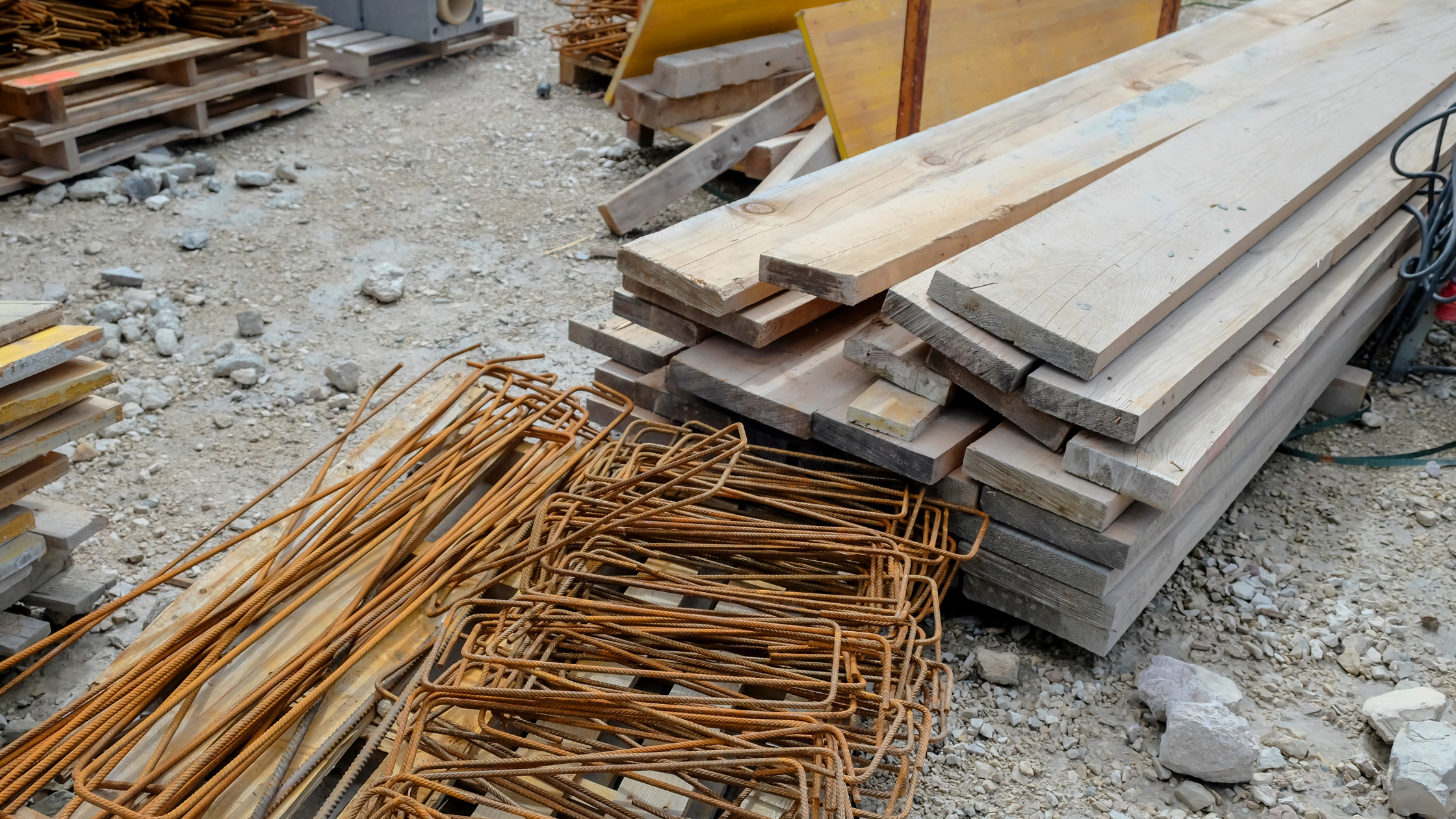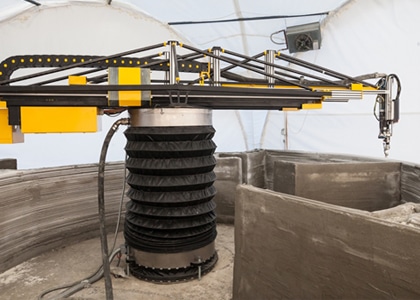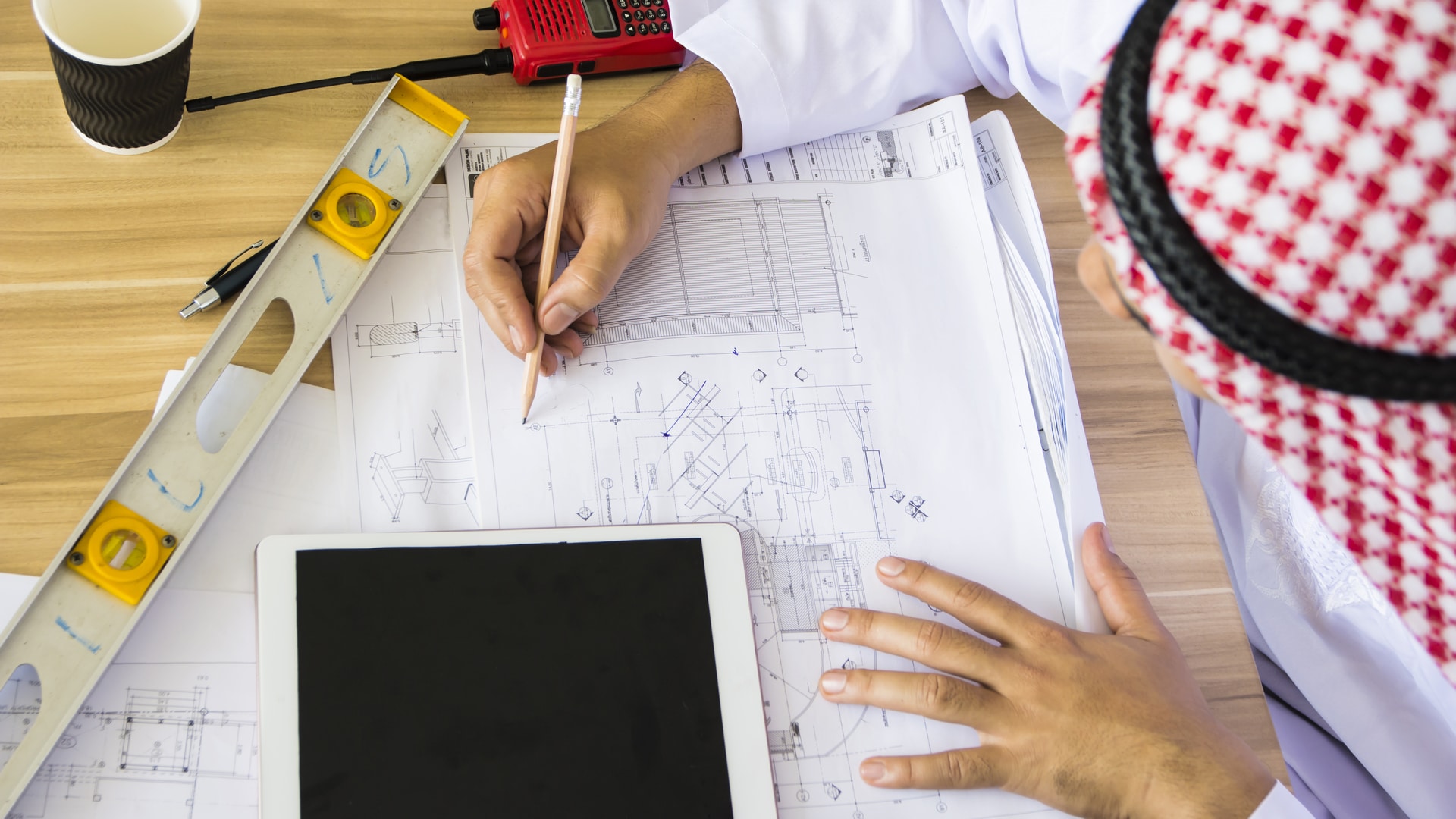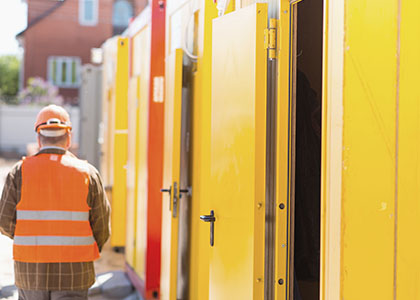Home / Blog / 3 Innovative Architecture Tips to Keep Your Construction Company Relevant & Top Building Materials for Your Next Construction Project
SUMMARY
Organizations that coordinate multiple construction-related functions often outsource product purchasing to third-party suppliers, to ensure the most relevant materials are sourced and costs reduced. And as environmental consciousness grows, landscapes change and budgets tighten, you need to consider how to incorporate and intensify innovation across building materials, design and architecture.
Utilizing innovative methodologies can help transform your projects’ efficiency and flexibility, including helping you save on unnecessary expenses. You need to take advantage of the latest construction techniques and products if you want to stay relevant and be considered a forward-thinking organization. Therefore, identifying innovative suppliers and collaborating with them becomes even more important, as they have the power to make or break your business.
In this article, we highlight three ways in which new and innovative technologies like hybrid building methodologies, energy-efficient products, and new scientific advances like 3D printing, amongst others, can help keep you relevant and profitable.
INDEX
- CONSTRUCTIONAL ADVANTAGES OF INNOVATIVE MATERIALS
- INNOVATIVE PRODUCTS CHANGING THE FACE OF CONSTRUCTION RIGHT NOW
WIDE SCOPE OF USE
3 WAYS IN WHICH INNOVATIVE ARCHITECTURE CAN KEEP YOUR CONSTRUCTION COMPANY RELEVANT
Building Materials to Consider When Purchasing for Your Next Project

As new construction technologies and business models emerge, being open to innovation is the key to surviving in the industry. Sustainability in construction is being seen as both a challenge and an opportunity. Simultaneously, as the service economy is growing, customers are demanding better value proposals and improved service.
The creation of value through innovative construction materials and architecture, therefore, has become increasingly important for businesses in a volatile global environment.
We discuss three areas of innovative architecture and products that can keep your company ahead of the competition.
WIDE SCOPE OF USE
Innovative construction methodologies are products or techniques that move away from traditional means of construction. These methodologies further advance the sustainability and efficiency of a firm’s construction processes.
In recent years, innovative construction methodologies are being increasingly implemented across building products and design. The use of drones, virtual and augmented reality, 3D printing, BIM, and advanced project management software are driving momentum in the industry.
Innovative methodologies in construction lead to:
-
Hybrid building technologies
-
Modular construction
-
Greener processes
-
Better performance
-
Competitiveness
, which use multiple building materials through a structure to create a more sustainable and fiscally responsible project. They usually use a combination of structural steel, precast concrete, and cast-in-place concrete to deliver the same functions in a more cost-effective way.
, which is the practice of constructing aspects of a building off-site and then transporting these features to a site for installation. Utilizing these technologies has the potential to increase the efficiency of your construction operations.
, such as modular construction, allows for reduced air pollution and waste, whilst increasing opportunities for reuse. With fewer natural materials being used for production, the environment benefits from a reduction of tree cutting. This promotes the construction of buildings that enhance environmental conservation.
, as utilizing any innovative construction methodology can result in an increase in performance and efficiency. Since you’re implementing the latest technologies into your building process, you’ll be speeding up your project time, saving money, and overall creating a better-performing structure.
If your construction company doesn’t keep up with technological advancements, you’ll fall behind. The best way to stay competitive is by utilizing innovative construction methodologies for your clients. As most construction companies are going green through the wider use of innovation, to fail to do the same would be to reduce your competitive edge.
CONSTRUCTIONAL ADVANTAGES OF INNOVATIVE MATERIALS

With over 5000 construction projects currently underway across the kingdom, the Saudi construction industry is on course to record an annual growth rate of 7% per year through to 2030[1]. Owing to its commitment to sustainability and structured growth, the country is perfectly poised to implement innovative architecture and newer, technologically advanced construction materials across projects.
Currently, large-scale projects like NEOM city, and the Red Sea housing plan, amongst others, are the biggest drivers of growth in the building material industry. The construction of these megaprojects is driving an urgent and growing need for building products. Using innovative materials in similar projects offers many benefits:
-
Durability and resilience
For any company looking to build a reputation and name for itself, it must ensure that its buildings and projects last the course. This means sourcing products that can deliver. Durability and resilience are closely related but have different implications in construction. Durability refers to a product or system that is long-lived and has characteristics that allow it to withstand anticipated conditions, whilst continuing to maintain its functionality. In addition to a product’s longevity, material resilience is also becoming a focal point in good building design. Whether this is because of the increasing number of sub-standard products saturating the construction supplies market, growing concerns about climate change, or user awareness, construction companies need to use innovative products and materials that meet the highest international standards and quality markers.Innovative products that improve resilience should be flexible, adaptable, self-sufficient, and durable.

-
Energy efficiency
- Furnaces and boilers
- Air-conditioners
- Refrigerators and freezers
- Dishwashers
- Clothes washers
- Water heaters
- Windows, doors, and skylights
- Light fixtures and bulbs
Energy efficiency in construction is becoming a top requirement, especially in countries like Saudi where the demand for innovative, efficient architecture is on the rise to meet the needs of extreme temperatures and heavy carbon footprints. An energy-efficient building or system can offer a construction company like yours both qualitative advantages in comfort, as well as quantitative benefits as financial savings. In fact, the cost-benefit is so much for construction companies that the region’s dynamic projects industry is valued at $3.1 trillion. An energy-efficient building envelope has the potential to insulate residents from high outdoor temperatures. They stay cooler for longer and provide lower utility bills.Partnering with a supplier who can source construction products that comply with the U.S. Environmental Protection Agency’s (EPA’s) ENERGY STAR Products Program can save you and future residents money. ENERGY STAR labeled products deliver better results whilst being environmentally friendly. They are available across the following product ranges:
-
Sustainability
-
Disaster resistance
-
Healthier products
The term “green” is being widely used in relation to building technologies. Green labeling considers the entire life cycle of the building or product including sourcing materials, manufacturing, use/operation, and disposal. Construction companies that are using sustainable materials are seen as being greener and more forward-thinking than their traditional counterparts.
The extent to which disaster resistance falls on your list of priorities is likely to depend on the characteristics of the geographical region you are constructing in. Depending on the nature of your building and the demographic characteristics of its future occupants, you may want to take measures into your construction design that mitigate future risks. This could be something as simple as installing backup generator capabilities or solar-powered options in a building that may have electricity shortfalls, amongst others.
With temperature extremes, especially in summer, occupants spend more time indoors in airconditioned and recirculated air. Indoor air quality has become an increasing health concern amongst residents in the kingdom – especially the health of young children who are often sick with viral infections. Some doctors even attribute the increasing incidence of asthma in children to higher levels of indoor particulate matter. As building envelopes become tighter, you need an innovative construction design that introduces a controlled amount of fresh air through smart ventilation. As a constructor, you need to use products that improve air quality. For example, using air conditioning units with built-in HEPA or MERV filters, and better ducting and insulation materials can markedly improve the quality of air by keeping it free of dust particles and germs. Additionally, you need to also consider that:
-
- Paints, carpet fibers, and wall coverings are free from potentially harmful contaminants such as formaldehyde.
- Exhaust fans in bathrooms and kitchens collect germs and pathogens whilst allowing for proper ventilation.
- New ducts are shortened or hard ducted to move air more effectively.
- Building mechanical ventilation is included in the construction design.
- Windows are easily operable for natural ventilation, whilst being energy efficient through double glazing and vacuum sealing.
-
Water efficiency
- Perform as well as, or better than their less efficient counterparts
- Are 20% more water-efficient
- Provide measurable water-saving results
In a country like Saudi, water efficiency is a top priority. Building design that is mindful of future consumption is imperative to conserving the kingdom’s water resources. Construction companies need to use innovative products that use less water than standard products – without sacrificing performance. This includes bathroom faucets, showerheads, toilets, and outdoor irrigation controllers. It pays to remember that industry-leading innovative products:
Even in areas of the country where water scarcity is not a concern, water quality still remains an important topic. Rural and urban areas alike have areas of water contamination, including pesticide and chemical runoff. Moreover, water-use rights – such as drinking water versus agricultural use – are constantly competing for the limited resource. Therefore, regardless of where your construction project or building is located, it is important to consider water-conserving products that can save future resources and money.

-
Lower maintenance
As a construction company, building products and finishes that do not require frequent painting, cleaning, and maintenance will save money in operating costs throughout the life of a building. If the building faces severe weather, select durable materials for the exterior that will stand up to high temperatures, dust, and strong winds. It is equally important to keep maintenance considerations in mind when planning green spaces and landscaping around the building. Frequent watering requires the use of utility-metered resources. On the interior, look for materials that are easy to clean and hold up well to traffic and use.
INNOVATIVE PRODUCTS CHANGING THE FACE OF CONSTRUCTION RIGHT NOW
Detailed below are some of the latest modern construction materials that could help you stay ahead of the curve to beat the competition:
-
Translucent wood
-
Hydro ceramic
-
3D-printed bioplastics
-
Light-generating cement
-
The CABKOMA strand
-
Pollution-absorbing bricks
-
‘Programmable’ cement
-
Allusion panels
is an innovative construction material that is environmentally friendly, and a great alternative to plastic and glass. It’s made by treating and compressing wood strips with lignin to make the wood transparent. It has the same strength as lumber, whilst being far lighter. It can be utilized across architecture to bring more natural light into a building.
, through a combination of clay and hydrogel, passively cool buildings and can reduce the internal temperature by as much as 5 to 6°C compared to the outside. Made with a hydrogel, Hydroceramics can absorb up to 500 times their weight in water by absorbing humidity from the air. During hot days, the water held in the polymer begins to evaporate, which has a cooling effect on the building. This is particularly beneficial in Saudi where summer outdoor temperatures can peak at 50°C. Using hydrodynamic bricks in construction design has the potential to reduce air-conditioning bills by 28%.
address the issue of waste is a major problem in the construction industry. Various studies put the number of building materials that end up wasted between 20 to 30% – representing an enormous environmental and economic cost. Using large 3D printers to build complex and sophisticated designs, from floors to façades, stairs, and even entire buildings, construction companies can purpose-build products to specifically meet their needs.
is a modification in the micro-structure of cement which helps it absorb solar energy and return it as light for up to 12 hours. It has the potential to offer innumerable uses across road and highway construction.
rod is a thermoplastic carbon fiber composite that offers seismic reinforcement and increased structural strength and support. A single strand of CABKOMA Rod of 160-meters weighs only 12 kg, which is five times lighter than a metal rod.
suck in pollutants in the air and release filtered air. The innovative material is designed to be part of a building’s standard ventilation system where the specialized brick is on the outside and regular insulation on the inside. These bricks have the potential to filter 30% fine particle pollutants and 100% coarse particles such as dust.
is achieved by tampering with the molecular structure of concrete as it sets, programmable cement can form into more tightly packed cubes, spheres, or diamond-shaped structures that make it stronger and less porous.
from Canadian firm Cymat Technologies form bubbles due to the dispersion of ceramic particles. They offer noise reduction benefits, are 100% recyclable, strong, and non-combustible.
KEY TAKEAWAYS
Purchasing departments in construction companies are increasingly gaining more importance as financial constraints on organizations grow. If the purchasing function was underestimated in the past, the direct impact of sourcing from bad suppliers is now known to cause negative ramifications in an organization. With margins decreasing, reducing costs without compromising on quality has become imperative.
Whilst we may concede that a lot of the leading building materials will continue being used in the foreseeable future, the development of alternatives is a promising prospect for companies looking to stay relevant.
To find out how Binex can help support your construction projects with innovative technologies, products, and designs, get in touch here.











